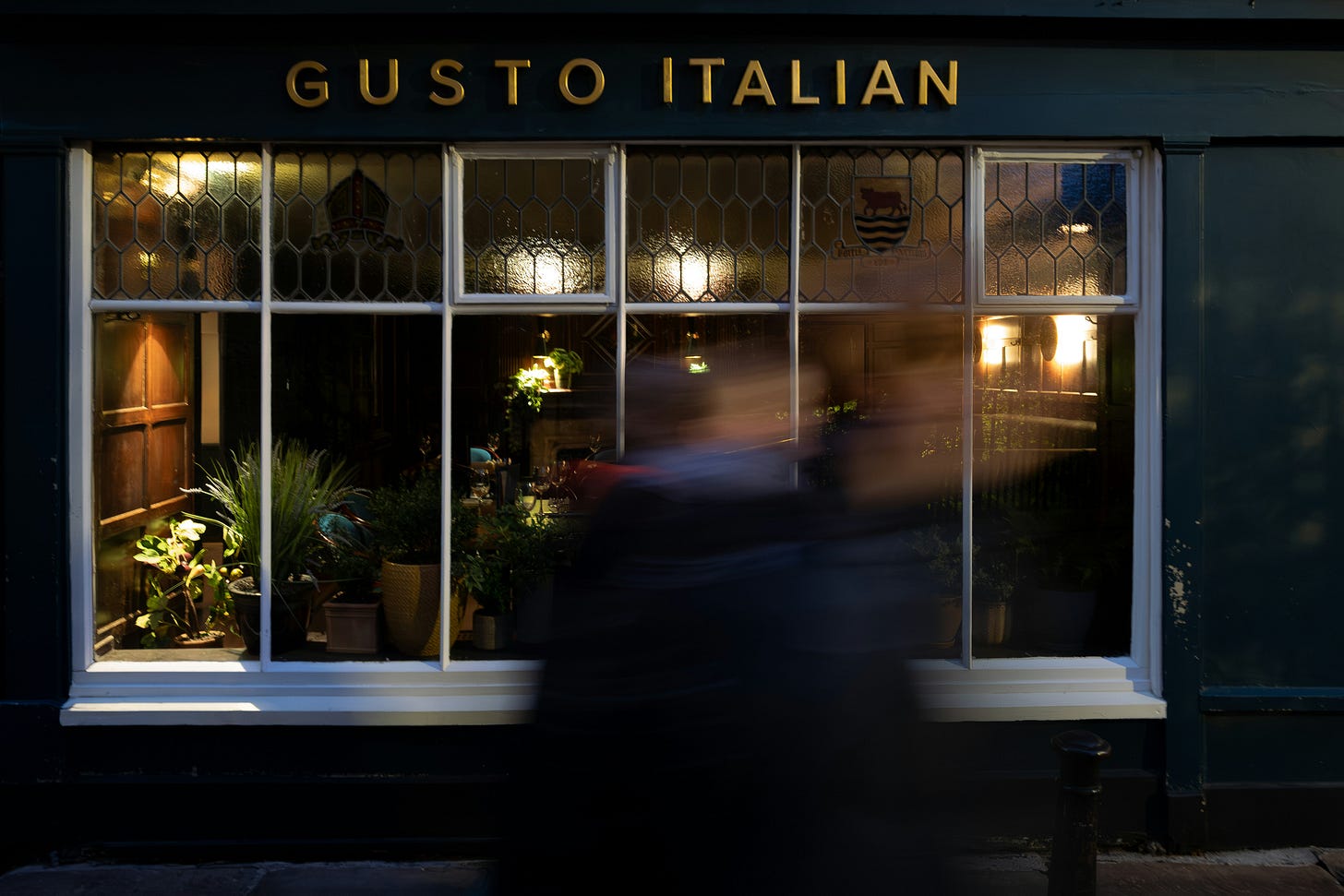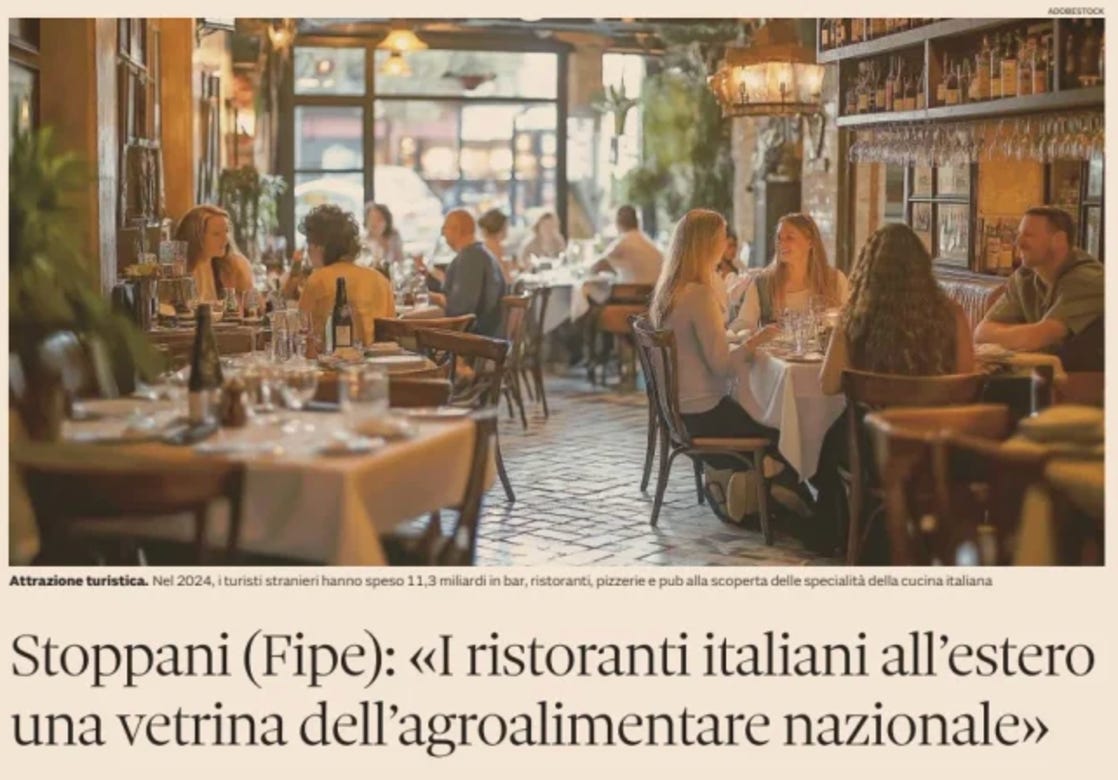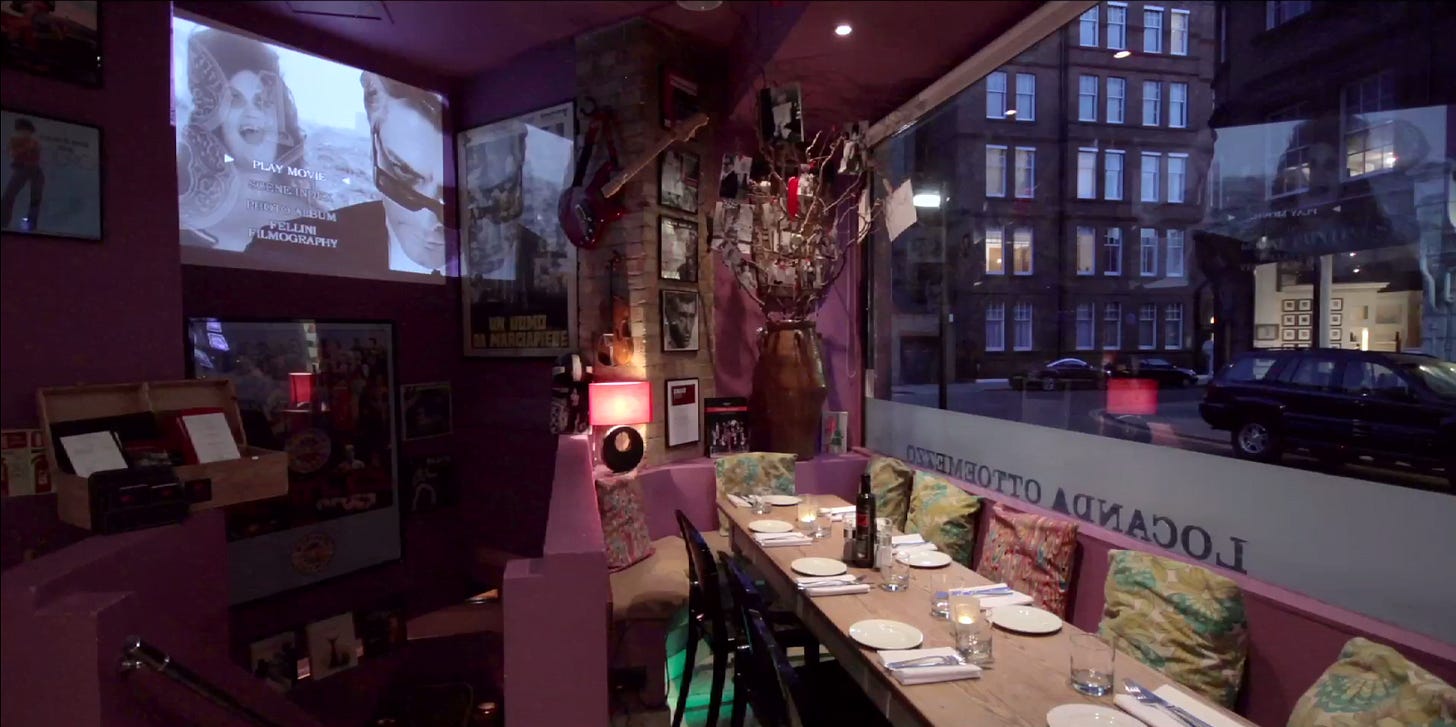Italian Restaurants Abroad
Global Ambassadors of a Culture Beyond Taste
Reading the recent Il Sole 24 Ore article by Enrico Netti, where Fipe President Lino Enrico Stoppani describes Italian restaurants abroad as a “showcase of the national agri-food industry,” I couldn’t help but reflect on how deeply true this is — not only from an institutional or economic perspective, but from a very personal one as well.
As someone who has long lived abroad, frequently dines at Italian restaurants across continents, and has in the past invested in various food concepts, I’ve seen both the triumphs and the struggles of exporting our culinary identity. I speak not as a restaurateur, but as an observer — a consumer with a critical eye, and someone who has witnessed firsthand what happens when the magic of Italian cuisine is handled with care… or forgotten entirely.
Let’s be clear: authentic Italian restaurants abroad are not just eateries. They are cultural outposts, places where the intangible essence of Italy — its warmth, humanity, and sense of community — is brought to life. They go beyond food. When they work, they create something irreplaceable. But when they fail, it’s often because the human touch is missing — that uniquely Italian blend of empathy, storytelling, and pride in hospitality.
As Stoppani rightly points out, Italian restaurants worldwide play a vital role in promoting Made in Italy products — to the tune of €10 billion annually in agro-food exports. Yet they are increasingly under pressure from logistical challenges, customs tariffs, and especially the shortage of Italian-trained personnel capable of delivering the “true experience.” We’re not just losing product quality — we’re losing identity.
In today’s global market, imitation is everywhere. “Italian sounding” menus flood cities, while real Italian cuisine is forced to compete not only on price but on a deeper level: emotional truth. It’s no longer enough to serve the right ingredients; what counts is the spirit behind the plate — the joy, the care, the human connection.
Stoppani’s call to evolve from “Made in Italy” to a broader “Sense of Italy” is crucial. It’s not about nostalgia. It’s about continuity. It’s about defending a model that brings together craftsmanship, design, food, and human warmth in a single cultural narrative. But without serious political and institutional support, many Italian establishments abroad are left to fight this battle alone — often with declining margins and rising risks.
In 2025, amid geopolitical tensions, rising operational costs, and market fragmentation, we risk weakening our most powerful form of soft power. If tourists spend billions in Italy for its food, it’s because that food speaks a universal language of belonging. The same should be true outside Italy’s borders.
We need to rethink support systems, promote high-standard training abroad, and protect authentic businesses from unfair competition and underregulation. Because every time someone abroad tastes a real Italian dish served with a smile and a story, it’s not just dinner — it’s diplomacy.
I ristoranti italiani nel mondo: ambasciatori globali di una cultura che va oltre il gusto
Leggendo su Il Sole 24 Ore l’articolo di Enrico Netti in cui il presidente di Fipe, Lino Enrico Stoppani, definisce i ristoranti italiani all’estero come “vetrine dell’agroalimentare nazionale”, mi sono trovato d’accordo sotto ogni aspetto — non solo economico, ma soprattutto culturale e umano.
Non sono un ristoratore. Non gestisco un’attività né servo piatti. Ma vivo all’estero da tempo, ho spesso investito in format legati alla ristorazione e continuo a essere un consumatore attento, curioso, spesso critico. Osservo la ristorazione italiana con affetto e interesse, perché so che in quei piatti c’è molto più di un semplice pasto: c’è il riflesso di un Paese intero.
Quando un ristorante italiano all’estero funziona davvero, non è solo per la qualità degli ingredienti. È per il modo in cui racconta l’Italia. È per il sorriso che accompagna la portata, per la gestualità familiare, per l’empatia che trasforma il pranzo in un momento di casa anche a migliaia di chilometri dalla Penisola. Quando tutto questo manca, lo si sente immediatamente: si ha la sensazione di trovarsi davanti a una copia fredda, magari “italian sounding”, ma senza anima.
Stoppani ricorda come il comparto all’estero muova 10 miliardi di euro in prodotti agroalimentari italiani. Ma anche quanto sia difficile oggi trovare personale formato in grado di trasmettere il “vero” spirito dell’ospitalità italiana. Senza questo elemento umano, il rischio è che anche l’autenticità dei prodotti si perda in traduzioni sbagliate o esperienze anonime.
Nel mondo di oggi, dove tutto si replica e tutto si semplifica, la differenza sta nei dettagli. E la ristorazione italiana ha sempre vissuto di dettagli: un profumo, un’accoglienza, una narrazione. Il passaggio da “Made in Italy” a “Sense of Italy” non è una forzatura: è un’evoluzione naturale, un’urgenza culturale.
Ma per sostenerla servono politiche serie. Servono incentivi alla formazione, protezioni contro la concorrenza sleale, strategie condivise che vadano oltre i confini nazionali. I ristoranti italiani all’estero non sono solo business: sono presidi identitari. Sono punti d’incontro, luoghi di ricongiungimento emotivo per gli italiani e di scoperta autentica per gli stranieri.
In un 2025 iniziato con molte incertezze — tra tensioni geopolitiche, aumento dei costi e concorrenza disordinata — serve un’azione forte. Perché quando un turista o un residente si siede in un vero ristorante italiano e viene accolto con gusto, calore e narrazione, non sta solo mangiando. Sta entrando in contatto con un’intera civiltà.
Credits: Gusto Italian (Oxford), Macellaio Soho (London), Locanda Ottoemezzo (London)





